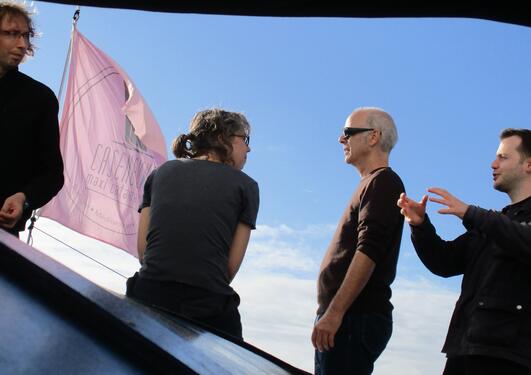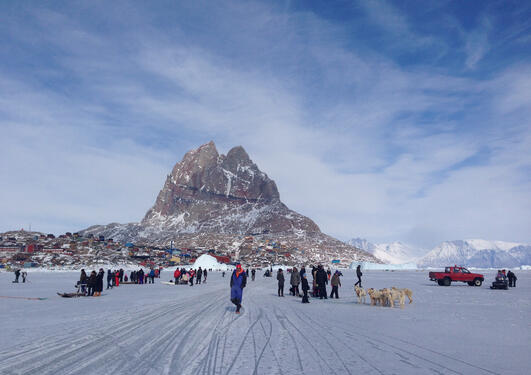SeMPER-Arctic
The SeMPER-Arctic project collects local stories of changes, crises and shocks in three Arctic communities in Greenland and Russia, and analyses in an interdisciplinary way how these narratives incorporate notions of resilience.

Main content
The objective of SeMPER-Arctic - Sense Making, Place attachment, and Extended networks as sources of Resilience in the Arctic - is to develop a narrative-centered, locally rooted, place-based understanding of resilience within arctic communities. This understanding is key for developing tools and strategies to increase community resilience in other communities, and the results will be shared with regional planners and policy-makers.
Furthermore, the consortium is contributing to the knowledge base on global environmental change through a responsible enquiry of what it means to be a resilient arctic community in the 21st century. The results will be translated into options for actions at the local, regional, national and circumpolar levels.
At the Centre for the Study of the Sciences and the Humanities (SVT), University of Bergen, Anne Blanchard leads work package 2, "Reflexivity in narrative-based resilience science", which is tasked to ensure that the narrative-type research that is undertaken in Semper-Arctic is responsible, reflexive and in awareness of the Arctic context. In particular, we ask: (i) how we collect narratives; (ii) why we collect narratives; and (iii) what impacts narrative research has on Arctic communities, on policy actions and on narratives themselves. This reflexive step among the consortium is achieved, in part, through reflexive diaries, one-on-one interviews with consortium members, and workshops to reflect on what is reflexive and responsible narrative research in the Arctic (including the 28th-30th September workshop).
Professor Jeroen P. Van der Sluijs, professor Jean-Paul Vanderlinden, senior researcher Arjan Wardekker, senior researcher Roxana Roos and guest researcher Natalia Doloisio are also involved in the project. Van der Sluijs is principal investigator at Utrecht University and takes part in WP5 - "Integration and progress on arctic resilience" and WP2 - "Reflexivity in narrative-based resilience science." Vanderlinden, who is affiliated with both the SVT and CEARC Research Centre, contributes to all WPs. Wardekker leads WP5, which asks: How do different understandings of resilience interact and match, and what could they learn from each other? Among others, this will involve cross-examining the experiences and insights from the other WPs. Wardekker also leads the efforts of the Dutch team and contributes to WP2. Singh is a part-time senior researcher in the Utrecht team, but she works from SVT in Bergen. She contributes to WP2. Natalia Doloisio works on WP5, doing an interdisciplinary cross-examination of the resilience narratives and data gathered in the other WPs (local community narratives, climate science, regional development & economy). She's also assisting Roxana Roos in WP2 (reflexivity), and vice versa for WP5.


